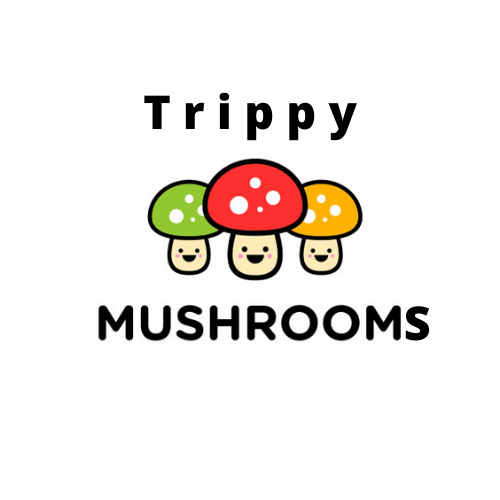No products in the cart.
Blogs
Types Of Psychedelic Magic Mushrooms Around The World
Psychedelic mushrooms are commonly known as psilocybin mushrooms, magic mushrooms, booms, and shrooms. They belong to the polyphyletic group of mushrooms which are enriched with various psychedelic compounds like psilocybin, psilocin, and baeocystin.
Almost 200 different types of mushrooms exist and vary due to their composition. The amount of psilocybin – the psychedelic effect causing component – is the main differentiating factor between certain types of psychedelic mushrooms.
Although magic mushrooms may have hallucinating effects, they can easily be confused with poisonous mushrooms. Therefore, clearly identifying and familiarizing yourself with different types of mushrooms is vital.
Types of Psychedelic Mushrooms
There are about 200 species of psychedelic mushrooms which are distributed around the world. These species have different names and are often classified according to their biological genera. Psilocybin, gymnopilus, panaeolus and copelandia are among the most common genera found throughout the world.
Mexico has the most types of psychedelic mushrooms (53), while more species are spread out in Canada and the US (22), Europe (16), Asia (15), Africa (4), and Australia and surrounding islands (19).
In general, psychedelic mushrooms are dark-spored, gilled mushrooms which grow in meadows and woods of the subtropics and tropic regions, where the soil is usually rich in humus and plant debris.
Psilocybe Cubensis:
The most common and well-known varieties of magic mushrooms is cubensis, which is often referred to as the golden cap due to its cinnamon brown top and can have a diameter of 2-8 cm. The cap gains an eventual flat surface with time as it starts its growth with a conical shape.
Psilocybe Mexicana:
Another common mushroom is the Mexican mushroom, commonly known as psilocybe Mexicana. This mushroom grows in Central and South America and tends to develop a brown cap of a diameter 0.5-2 cm. An injured mushroom can be differentiated from a healthy one by its cap color, while a healthy full-grown cap appears to be brown, an injured mushroom tends to turn blue. This mushroom is known to give mild effects to consumers.
Psilocybe Semilanceata:
Another common form of magic mushroom is the ‘liberty bell,’ which is always found in grassy, damp fields where animals graze. However, it does not grow on animal dung. These mushrooms tend to have a conical, large cap with a varying diameter of 5-25mm, and their nipple shape usually does not change over time. Consuming this mushroom leads to visual hallucinations, over responsive reflexes, increased heart rate, and pupil dilation.
Psilocybe Aurescens:
Growing in the northern Oregon Coast, Psilocybe azurescens are an example of magic mushrooms with relatively higher concentrations of psychoactive biochemicals like psilocybin and psilocin. Due to their cap shape, they are often referred to as the ‘flying saucer’ mushrooms. This highly adaptive species tends to induce its effects in the human body, 30 minutes after ingestion.
Psilocybe Cynescens:
Psilocybe cyanescens are also known as ‘wavy caps’ which is due to the shape their cap takes once the mushroom is fully grown. This mushroom is also referred to as the ‘cyan’ or the ‘blue halo’ with areas of growth in the United Kingdom and North America. Due to its potency it is widely used in the United States.
Psilocybe Pelliculosa:
Psilocybe pelliculosa are often observed to grow in clusters on forest debris. This magic mushroom is commonly found in British Columbia, Canada, the the Pacific Northwest regions of the United States. With a cone shaped cap in its earlier stages of growth, it later develops a broadly bell-shaped top. This mushroom is known to have weaker effects for those who consume.
Psilocybe Weilli:
The rarest magic mushroom is Psilocybe weilli which is found only in northern Georgia in the United States. This fingus grows in the months of May to December in areas with red clay soil with pine needles. The traits of the mushroom include the peculiar smell and taste which is often described to be similar to cucumber.
Types Of Psychedelic Mushrooms Range Far and Wide
Although, psychedelic mushrooms vary from each other in regard to their features, shape and the duration of effect, all of them tend to have similar effects on the human body. After 20 minutes of ingestion, psychedelic mushrooms tend to show their effects which may include hyperventilation, increased heartbeat, over heightened sensory and emotional response, and sleepiness.
The extent to which the effects are felt is directly correlated with the concentration of the active biochemicals present in the mushroom. Psychedelic mushrooms are spread throughout the world and have specific traits which need to be carefully analyzed as they can be easily confused with poisonous mushrooms.
We at trippymushrooms.ca carry all types of psychedelic magic mushrooms that are all high quality and fresh. Discreetly shipped to you with Canadapost Express
